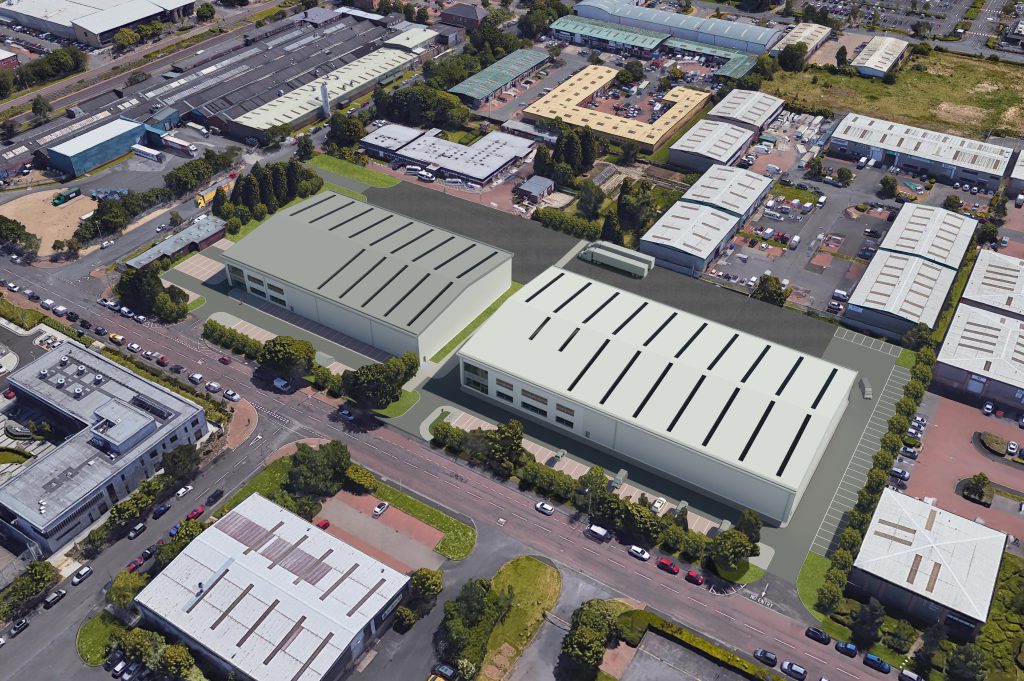
Partner at Knight Frank, Mark Proudlock, gives DC an update:
What’s happening in the market?
The high level of demand for space that started during the early days of the Covid crisis is showing
little sign of slowing. I can’t remember the last time we experienced this level of enquiries and the
subsequent lack of stock makes it difficult to identify properties to meet occupiers’ requirements. This
is the case across all property sizes and emphasises the pressing need for warehouse development
across our region.
The year so far
Occupier take-up of units over 50,000 sq. ft. across the first three quarters of 2021 was over 3.1
million sq. ft. which is well ahead of the average annual take up of 2.3 million sq ft recorded over the
previous half decade. Much of the increase has been driven by the uptick in online retail with internet
sales as a percentage of total sales at around 25.5% Whilst lower than its lock-down peak of 37%,
this remains a marked increase from pre-Covid levels (19.1%). This suggests that for many
consumers changes in purchasing behaviour may be lasting. We have also experienced take-up
from manufacturing companies such as Strabag who Knight Frank advised on the acquisition of their
135,000 sq ft facility at Hartlepool Docks for the construction of tunnel segments for HS2, as well as
a variety of companies seeking to manufacture on shore or hold additional stock to protect them from
supply chain issues. Stock levels are up by around 200,000 sq. ft. compared with the same period
last year but any well-located quality units returning to the market are being snapped up.
Are new units being built?
The development pipeline can be slow to react but we are seeing speculative construction starting or
about to start on a handful of sites across Tyne & Wear.
UK Land Estates are first on site developing a 45,000 sq. ft. high bay unit on Eighth Avenue, Team
Valley in Gateshead with construction of a second unit of 36,000 sq ft on the adjacent site due to
follow. There is already strong interest in both units showing the pent-up demand for quality new
builds.
In Washington, planning has been approved on schemes for Turbine Business Park and the Legal & General-backed Hillthorn Business Park.
North of the Tyne, UK Land Estates are about to start construction of a 48,000 sq. ft. high bay unit at
Intersect 19 on their Tyne Tunnel Estate in North Tyneside. The unit will be ready in Q2 next year.
Why aren’t more developers building more facilities, given the lack of stock?
The reasons can be quite complex but, in a nutshell, the viability of industrial and logistics schemes
has been a driving factor, with historically low rental levels in our area, compared to other regions.
The increasing lack of stock and high demand has boosted rental growth over recent years which
has increased viability and helped bring forward the schemes currently in the pipeline. However,
grant funding and other forms of public sector intervention are still frequently needed to make
projects viable and break ground. Significant increases in build costs and delays obtaining materials
are added challenges now being faced.
Developers also face risk predicting where demand will lie in two to three years’ time, which tends to
be the minimum time taken to secure planning and build-out a scheme. Awaiting a pre-let is a further
method of mitigating risk and explains why some sites appear to sit dormant.
Those developments about to break ground or under construction have been at least three years in
the making and the pandemic is a stark demonstration of an unexpected event that can potentially
derail progress. However, the pandemic has, if anything, accelerated development as developers
seek to address the increased demand for space.
Is there land available for industrial developments?
There are a number of sites across the region allocated for industrial or logistics use at varying levels
of readiness, in terms of planning or site preparation.
Teesside boasts a significant supply of development land with Teesworks, marketed as Europe’s
largest brownfield site and the UK’s largest Freeport, contributing 4,500 acres. GE Renewable
Energy has committed to an 800,000 sq. ft. manufacturing facility at Teesworks to build wind turbine
blades.
Land for manufacturing is available at the International Advanced Manufacturing Park (IAMP) to the
north of Sunderland. However, it has seen a high level of take-up – most significantly with Envision
AESC’s recent announcement that construction will start on its electric battery Gigafactory next year.
On Tyneside, Port of Tyne has a number of development sites suitable for the delivery of build-to-
suit units, ranging from four to 35 acres for units up to 750,000 sq. ft. Whilst on the 235-acre former
Blyth Power Station at Cambois, Northumberland, enabling works have started on the first phase of
Britishvolt’s electric car battery gigafactory. When complete in 2027 it is understood the factory will
be over four million sq. ft. and according to Britishvolt – the largest single industrial investment in the
North East since the arrival of Nissan.
What’s the answer to balancing out the supply and demand issue?
Viability and duration of the development process remain key barriers. Funding initiatives such as
those managed by the North East LEP have successfully enabled development which otherwise
wouldn’t have happened. These interventions continue to play an important role in increasing stock.
In areas where rents have reached levels to make speculative development viable, a handful of
schemes are either starting on site or are imminent. It is yet to be seen if the extent of development
will satisfy demand but the factors driving the need for space seem unlikely to change and with a
limited number of developments in the pipeline, developers should feel increasingly confident about
committing to new schemes.
Mark Proudlock is an industrial and logistics property agent at Knight Frank in Newcastle. Contact
him on 0191 221 2211 or mark.proudlock@knightfrank.com
